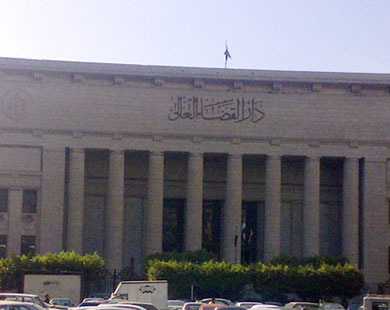 I had intended to use the last editorial in 2009 to review the past year and cite hopes for the New Year. I changed my mind, however, in the wake of the recent visit of President Hosni Mubarak to the Court of Cassation—the highest judicial authority in Egypt—to honour the celebration marking 25 years since the revival of the Supreme Council of the Judiciary. The president described Egypt’s judiciary as the fort defending justice and the Constitution, and its judges as the pride of Egypt and the symbol of the rule of law.
I had intended to use the last editorial in 2009 to review the past year and cite hopes for the New Year. I changed my mind, however, in the wake of the recent visit of President Hosni Mubarak to the Court of Cassation—the highest judicial authority in Egypt—to honour the celebration marking 25 years since the revival of the Supreme Council of the Judiciary. The president described Egypt’s judiciary as the fort defending justice and the Constitution, and its judges as the pride of Egypt and the symbol of the rule of law.The president’s words confirm the lofty place occupied by the judicial authority in Egypt, and stress the fact that this authority is instrumental in attaining justice and securing the rights of all Egyptians indiscriminately. For the many who resort to courts of law to regain lost or usurped rights and come out with fair rulings, this is indeed a tangible fact on the ground. But the bitter reality is that the fair rulings are no more than ink on paper when it comes to executing them. The rulings remain limited to the realm of theory while those in whose favour they were issued fail to regain their rights and stand by to deplore the lame, ineffectual justice.
Watani’s Problems on Hold file includes a host of agonising cases of non-executed rulings, painful samples of bruised justice. Once a ruling is issued in favour of an individual, it raises hopes that justice will be attained. Months and years—if not decades—roll on, with no way to have the ruling executed. Between notorious red tape, complicated procedures, rampant corruption, and lacking determination on the part of the authorities to execute the rulings, all hopes in attaining justice are lost, and court decisions are rendered toothless.
Anyone in doubt may have a glimpse at a case which was seen in court in 1987, the ruling appealed and the case won in 1993, but the ruling is as yet not executed. The details are almost unbelievable since, in the absence of an effective system to secure the execution of rulings, these rulings are crushed and emptied of their content.
A ruling was issued by the local district office of Old Cairo in January 1987 that house No 3 on Manial al-Roda Street should be demolished following the eviction of its tenants, since the building was sufficiently dilapidated to be life threatening. The tenants contested the ruling and demanded that the building be repaired, but the Justice Ministry experts issued a report to the effect that the building was beyond repair and ought to be demolished. The contest was thus rejected in February 1990.
The tenants appealed the ruling but, again, the appeal was rejected in December 1990. In 1993 the tenants contested the execution of the ruling—kindly note that three years had already passed with no ruling executed—but their contest was again rejected in April 1994.
Meanwhile, the local district office—out of fear for the tenants’ lives—had issued an eviction and demolition order in May 1993. The building was evicted but, before any demolition could take place, a group of strangers forcibly seized the building, occupied the place, and resisted any demolition. The owners hastened to the authorities, armed with all the documents and confident that their rights were clear as daylight, especially that the executive authorities concerned were all too well aware of their predicament. They were shocked, however, to discover that these authorities, which they had imagined would rush to their rescue, treated the matter as a dispute over ownership, and refused to expel the usurpers. It took 14 years for the local district authority to confirm in 2007, the ruling to demolish the building but even then the police refused to help, saying it was not within the scope of their responsibility to secure the demolition.
The worst, though, was yet to come. A construction engineer at the local district office wrote a report that the building was not life threatening and could be salvaged and, accordingly, invalidated the demolition permit. The owners realised they had been entrapped in a corruption web activated by those who usurped their property. What significance was a court ruling in their favour when corruption rendered it non-executable?
Putting an end to such painful realities is the real challenge facing our judiciary; otherwise justice will remain no more than ink on paper.




